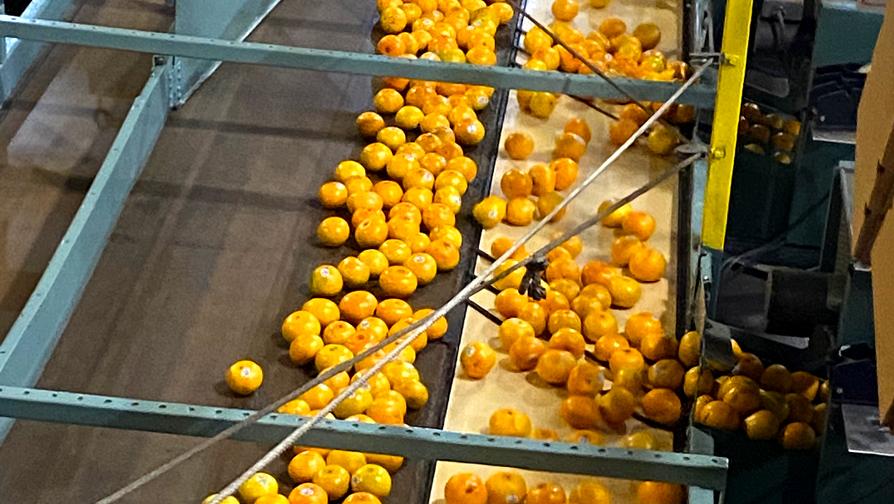Almond Growers Tap into High Tech for Optimal Water Efficiency

The California almond industry and Davis location of USDA-ARS are enjoying preliminary success with the same type of remote-sensing water management technology that has excelled the last decade for E&J Gallo Winery and other vineyards in the state. Referred to as T-REX, the Tree-Crop Remote Sensing of Evapotranspiration Experiment identifies water and orchard management opportunities that maximize water-use efficiency and carbon sequestration in almonds and other woody perennial tree crops.
“We are really interested in quantifying orchard water balance as effectively as possible,” Andrew McElrone, a Research Plant Physiologist with USDA-ARS in Davis, told growers at The Almond Conference. “We want to measure everything in the system to give you the information that you need to deliver the water to where you want it in order to grow the crop productively.”
VINEYARD PRECEDENT
California’s grape industry — led by Gallo, which partnered with USDA-ARS as well as Utah State University and eventually NASA — has been executing a similar mission since 2013. Called GRAPEX, the Grape Remote Sensing Atmospheric Profile and Evapotranspiration Experiment successfully provides wine grape producers with the tools needed to generate the high-resolution evapotranspiration (ET) data used to guide water management decisions.
GRAPEX developed practical tools based on satellite and/or airborne systems to guide irrigation decision making. The goal of the project, reiterated in a T-REX study published in the January issue of the Bulletin of the American Meteorological Society (BAMS), was to develop accurate maps of actual evapotranspiration (ETa) at daily to weekly increments and subfield spatial resolutions to reduce water use and enhance crop quality by improving irrigation efficiency.
“We had numerous vineyards throughout California where we were actually measuring, on the ground, the water vapor that was coming off of that surface in terms of the crop ET and comparing that against remote sense models,” McElrone, a collaborator and co-lead on both the GRAPEX and T-REX projects, said.
The project necessitated the placement of research-grade sensors on the ground and an “army of people” to monitor the results, he said.
“Every time the satellite would pass over, we would have people on the ground making measurements to make sure that what we’re seeing at the leaf level matches with the satellite level,” McElrone said.
“We use that same concept moving into T-REX.”
ALMONDS AT THE FOREFRONT
USDA-ARS initiated Tree-Crop Remote Sensing of Evapotranspiration Experiment in 2021. Partners include the Almond Board of California, Olam Food Ingredients, and other institutions. The project combines satellite, uncrewed aerial vehicles (UAVs), and proximal sensing technologies to retrieve key variables used to model surface fluxes and biophysical properties.
T-REX aims to answer three irrigation questions: How much water is needed (related to tree water use)? When to irrigate (related to tree water stress)? And where to place it (related to spatial variability)?
“Remote sensing gives us the capability to do this over much larger scales than we’ve been able to do in the past and to really help growers achieve production goals and meet those policy needs that we have,” McElrone said.
California’s almond industry, even more so than its wine grape counterparts, finds itself uniquely positioned to curb water use and mitigate climate change while maintaining the economic viability of its production. For starters, almond trees cover nearly 1.4 million acres in California, more than any other crop. Plus, they require consistent water supplies for irrigation.
Under the new methods derived by T-REX, particularly ET-based irrigation scheduling, even a 10% decrease in the state’s almond orchard irrigation would equate to about a third of the water in Lake Oroville, California’s second-largest reservoir, at average levels, according to the T-REX study.
“We’re laser focused on evapotranspiration,” McElrone said.
From a carbon perspective, the study adds, almond orchards could sequester 8% of the state’s current greenhouse gas emissions by transitioning toward climate-smart practices.
CONCLUSION
The study’s co-authors, led by University of California, Davis, Project Scientist Nicolas Bambach, USDA-ARS Research Scientist Kyle Knipper, and McElrone, find their results “promising” — and with good reason, according to Sebastian Saa, the Associate Director of Agricultural Research with the California Almond Board.
“Irrigators use indirect measurements to prescribe how much water they need to apply to their trees, but I think we know that we would like to do better than using indirect measurements and assuming that all mature orchards transpire the same in a given region at a given time,” Saa said. “This experiment does not only help us to solve for actual evapotranspiration but also offers the ability to observe tree spatial variability in terms of transpiration, which is key for leveraging automation in the irrigation space.”










